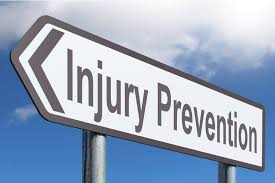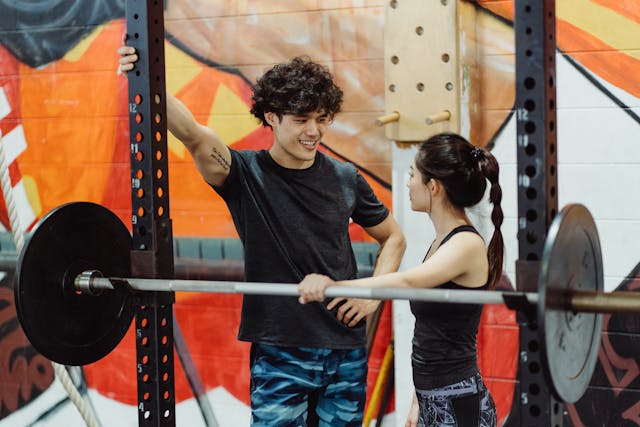Adolescence is a transformative period for physical, mental, and emotional growth. Performance enhancement strategies tailored to this age group can help adolescents develop resilience, improve athletic performance, and also establish lifelong fitness habits. So, by focusing on these six pillars, we can create a foundation for success and well-being.
1. Strength and Conditioning
Firstly, strength and conditioning are fundamental for building physical capacity. However, research supports the role of strength training in improving muscular strength, endurance, and coordination among adolescents without stunting their growth (Behm et al., 2008). Also, starting with bodyweight exercises and gradually integrating resistance training ensures safety and progression.

2. Injury Prevention Through Smart Training
Adolescents’ developing bodies are particularly vulnerable to overuse injuries. Moreover, studies emphasise the importance of dynamic warm-ups, balanced training loads, and adequate recovery time to mitigate injury risks (Myer et al., 2011). Incorporating proper recovery protocols, such as sleep and hydration, further supports optimal performance.
3. Nutrition: Fuelling Growth and Performance
In addition, a balanced diet is essential for fuelling adolescent athletes’ growth and activities. According to the Academy of Nutrition and Dietetics, a mix of lean proteins, whole grains, and plenty of fruits and vegetables can support both muscle repair and energy needs (Rodriguez et al., 2009). Proper hydration is also critical, as even mild dehydration can impair athletic performance.
4. Mental Resilience and Focus
Mental resilience is a cornerstone of athletic success. So goal-setting, mindfulness, and positive reinforcement have been shown to improve focus and reduce stress among adolescent athletes (Kaufman et al., 2009). Moreover, confidence-building techniques help young athletes thrive under pressure and cultivate a growth mindset.

5. Avoiding Common Pitfalls
Adolescents may fall into traps such as overtraining or relying on unregulated supplements. Overtraining has been linked to increased injury risks and burnout, while supplements often lack regulation and may not provide meaningful benefits compared to proper training and nutrition (Feeley et al., 2016). So educating adolescents about these risks is key.
6. Tailored Training Programs
Every adolescent is unique, so their training programs must reflect individual needs. Evidence suggests that age-appropriate and personalised training can maximise physical fitness gains while reducing injury risks (Faigenbaum et al., 2009). Trainers should emphasise exercises that target stability, mobility, and also sport-specific skills.
Final Thoughts
Performance enhancement in adolescents is about much more than short-term athletic gains. So it’s an opportunity to install healthy habits, build resilience, and create a lifelong love for fitness. By focusing on these six pillars, we can empower young athletes to reach their full potential while safeguarding their physical and mental well-being.
References
Behm, D. G., Faigenbaum, A. D., Falk, B., & Klentrou, P. (2008). Canadian Society for Exercise Physiology position paper: Resistance training in children and adolescents. Applied Physiology, Nutrition, and Metabolism, 33(3), 547-561. https://doi.org/10.1139/H08-020
Faigenbaum, A. D., Kraemer, W.J, Blimkie, C.J, Jeffreys, I., Micheli, L.J, Nitka, M., & Rowland, T. W. (2009). Youth resistance training: Updated position statement paper from the National Strength and Conditioning Association. Journal of Strength and Conditioning Research, 23(5), S60–S79. https://doi.org/10.1519/JSC.0b013e31819df407
Feeley, B. T., Agel, J., & LaPrade, R. F. (2016). When is it too early for single sport specialization? The American Journal of Sports Medicine, 44(1), 234-241. https://doi.org/10.1177/0363546515576899
Kaufman, K. A., Glass, C. R., & Pineau, T. R. (2009). Mindful sport performance enhancement: A training manual for athletes and coaches. American Psychological Association. https://doi.org/10.1037/11860-000
Myer, G. D., Faigenbaum, A. D., Ford, K. R., Best, T. M., Bergeron, M. F., & Hewett, T. E. (2011). When to initiate integrative neuromuscular training to reduce sports-related injuries in youth? Current Sports Medicine Reports, 10(3), 155–166.https://doi.org/10.1249/JSR.0b013e31821b1442
Rodriguez, N. R., DiMarco, N. M., & Langley, S. (2009). Position of the American Dietetic Association, Dietitians of Canada, and the American College of Sports Medicine: Nutrition and athletic performance. Journal of the American Dietetic Association, 109(3), 509-527. https://doi.org/10.1016/j.jada.2009.01.005
G3 Coaching And Consulting




